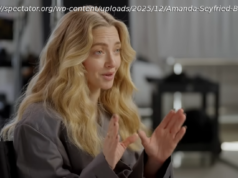The awards-season favorite is a visual feast that rewards attention.
Do you need to see Roma in the theater?
Oscar-winning director Alfonso Cuarón’s quiet, contemplative, deeply personal film, based on the experiences of the woman who worked for his family and raised him in Mexico City and set during a time of social unrest, has already received plaudits from critics’ groups all over North America. It’s earned Best Picture nods from groups in New York, Los Angeles, and Toronto, among others. It opened in theaters for a few weeks, and on December 14, it hit Netflix while expanding to 600 theaters in more than 40 countries.
So since it’s in your Netflix account now, do you have to see it in a theater to really enjoy it?
Short answer: Of course not.
Longer answer: If you can — if it’s in a theater near you, and you have the means — then you absolutely should.
Here’s why.
Initially, Roma was slated to be released on Netflix, and in a handful of theaters on the same day, all on December 14. But following the film’s rapturous reception during the fall festival season, Netflix decided to release it on screens for three weekends prior to its “official” release date and expand its theatrical release, which includes playing on 100 screens in the US.
Netflix doesn’t do this for all of its movies. So why Roma? And why should audiences care?
Alfonso Cuarón, the Oscar-winning director of Roma, planned to shoot the film with his frequent collaborator (and childhood friend) Emmanuel Lubezki. The pair have collaborated on most of Cuarón’s films, including 2001’s Y Tu Mamá También, 2006’s Children of Men, and 2013’s Gravity. Cuarón even prepped the film with Lubezki in mind.
Roma is about Cleo, a woman who works for a doctor’s family in Mexico City in the 1970s. But Cleo’s story happens against the backdrop of social and political unrest in Mexico, and some of the scenes are staggering in how carefully and extensively they show the texture and complexity of that time, from arson at a wealthy family’s home to protests and riots in the streets.
In the end, Lubezki’s schedule didn’t line up, and Cuarón shot the film himself — a first for the director. He used an Alexa65 digital camera, which creates an image that includes the same kind of detail and visual information that would come with shooting on 65mm film (and translates, for boring technical reasons, to 70mm projection in the theater).






